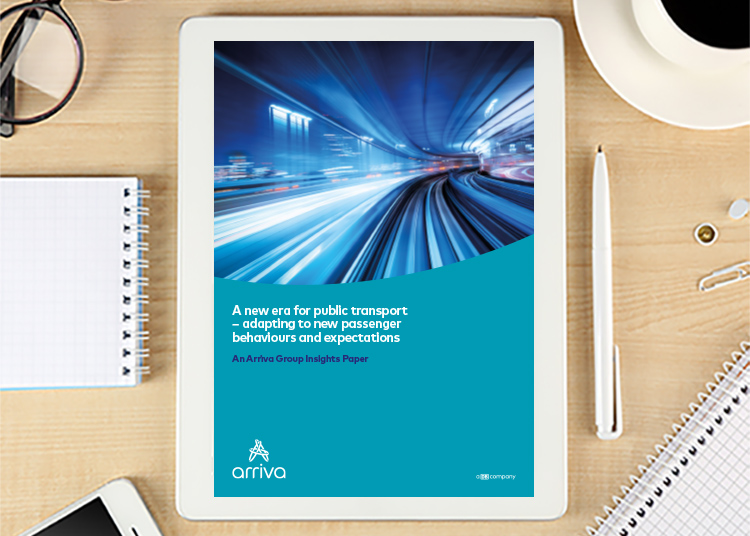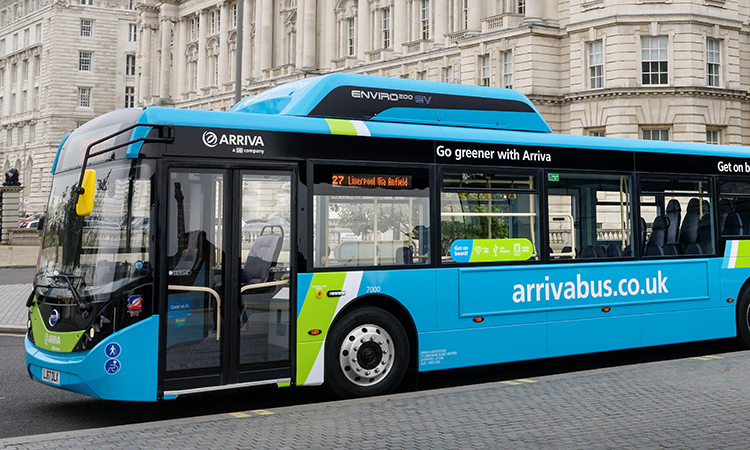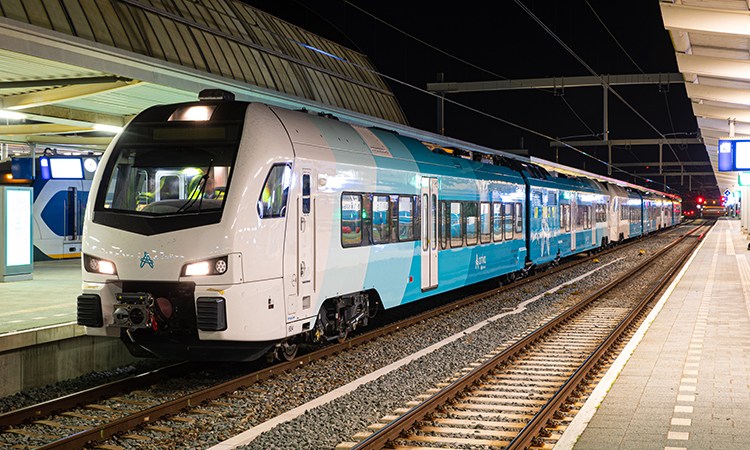A new era for public transport: Europe’s recovery from the COVID-19 pandemic
- Like
- Digg
- Del
- Tumblr
- VKontakte
- Buffer
- Love This
- Odnoklassniki
- Meneame
- Blogger
- Amazon
- Yahoo Mail
- Gmail
- AOL
- Newsvine
- HackerNews
- Evernote
- MySpace
- Mail.ru
- Viadeo
- Line
- Comments
- Yummly
- SMS
- Viber
- Telegram
- Subscribe
- Skype
- Facebook Messenger
- Kakao
- LiveJournal
- Yammer
- Edgar
- Fintel
- Mix
- Instapaper
- Copy Link
Posted: 1 October 2021 | Jana Siber - Arriva Group | No comments yet


As one of Europe’s leading public transport operators, Arriva Group has seen first-hand how the pandemic has influenced new trends and travel behaviours for users of public transport. To get closer to this, and to understand the opportunities for the sector, Arriva has conducted passenger research in six of its 14 European markets and subsequently published a Passenger Insights Paper, which can be viewed in this article. Intelligent Transport’s Leah Hockley sat down with Jana Siber, Arriva Group’s Managing Director of Mainland Europe, to find out more.


Can you tell us about the new passenger research that Arriva has conducted?
The impact of COVID-19 and all of the subsequent national lockdowns across Europe had a dramatic effect on the continent’s mobility habits, with public transport seeing passenger numbers drop by up to 90 per cent at the height of the pandemic. But what’s important now is the future – particularly as we start to re-build our economies and return to workplaces following the success of the vaccination programme.
Arriva commissioned this research to help us understand how passengers’ travel behaviours might have changed as a result of the pandemic”
Arriva commissioned this research to help us understand how passengers’ travel behaviours might have changed as a result of the pandemic. We worked with an independent research agency to help us gather data across six of our European markets: the UK, the Netherlands, the Czech Republic, Spain, Italy and Slovenia. We surveyed over 1,700 public transport users and asked them about what they did before COVID-19, what they currently do and what they expect to do in the future.
Why did Arriva feel it necessary to undertake this research?
Arriva is a business that listens and shares meaningful insights with passenger transport authorities, who are our clients, enabling us to work together in partnership towards common goals. We’re a people-focused business, with passengers and employees at the heart of our operations. We have a long heritage in the public transport sector, so keeping our finger on the pulse is important, as is sharing expertise and learnings across our markets.
Before the pandemic, we were already seeing some big societal issues like digitalisation, urbanisation and climate change giving the public transport sector a lot to think about – now, as societies look towards a post-pandemic world, these issues have become more important than ever. Digitalisation has accelerated during the pandemic, and we’ve responded by quickly implementing contactless payment systems across our network and digital solutions such as apps for booking and planning travel. Urbanisation continues to be a key trend in Europe, with predictions showing that, by 2050, we can expect approximately 84 per cent of Europe’s population to have moved to towns and cities, while rural areas are set to become less attractive. Then, of course, climate change has now become a climate emergency and, with COP26 quickly approaching, all eyes are on the UK.
FIND OUT MORE
To read Arriva Group’s Passenger Trends Insights Paper, click the link below:
What were the key findings?
As we know, public transport played a crucial role during the pandemic – serving communities and providing vital services to key workers and those who were not able to work from home. However, for those who could work or study from home, Arriva found that the pandemic had provided them with the opportunity to adopt a different and, in some cases, more balanced lifestyle, which subsequently led to a re-evaluation of their travel habits and patterns.
The increase in home working is a trend which looks set to stay, and our research tells us that people have come to appreciate the increased flexibility that they now have. Many passengers say that they no longer need to commute five days a week, and this has changed their expectations of their commute and how it should look and feel. Tolerance for crowded services has dropped and a desire to use multiple modes, including active travel, as part of one journey has increased. This means that public transport is not only competing with other modes like the car, but also with decisions to not travel at all.
Post-pandemic, Europe’s level of urbanisation will not decrease and carbon commitments will not go away… These challenges can’t be solved without looking at our transportation and mobility habits as a society”
COVID-19 itself has also had an impact on passenger’s feelings around safety on board, and this has then influenced their perceptions, which in turn influences their decisions to use public transport. For example, passengers in Italy are much more concerned about COVID-19 safety than other markets, and it’s important that we understand why this is.
Lifestyle changes also mean that people are spending more time at home and, therefore, in their local areas, and this means changes to their travel behaviours, too. But, even so, public transport remains highly relevant and needed by large sections of society and will have a fundamental role in the decarbonisation agenda.
Here lies the opportunity. Post-pandemic, Europe’s level of urbanisation will not decrease and carbon commitments will not go away. High densities of both population and infrastructure in urban areas will exacerbate already familiar challenges: environmental degradation, air pollution and congestion. These challenges can’t be solved without looking at our transportation and mobility habits as a society.


Credit: Arriva Group
There is a lot of data out there from various sources at the moment, why do you think Arriva’s findings are particularly significant and insightful?
In some ways our findings are not surprising, but it is the analysis of our data that gives us a vital glimpse into the future opportunities for our industry. For example, if the data tells us that people are commuting into city centres less frequently (61 per cent expect to be travelling to work less than five days a week), then, by default, they are spending more time at home and, therefore, more time within their local community consuming local services. The traditional ‘after work drink’ might now be more local to home rather than in the heart of our cities, so how do we respond to this shift?
Do we need more interconnected suburban public transport networks? Do we need greater access to active modes and new modes, such as bicycles and e-scooters? Do we need more Demand Responsive Transport (DRT), which allows people to shape the service that they need and decide when they need it? These are the kinds of conversations that we want to be having with our passenger transport authorities in Europe.
What do you think needs to happen within the public transport sector in order to better adapt to new behaviours arising from the pandemic?
There is an opportunity to shape future mobility and encourage new habits, working together with governments and transport authorities so that we can provide mobility services fit for evolving passenger needs.
There is an opportunity to shape future mobility and encourage new habits, working together with governments and transport authorities so that we can provide mobility services fit for evolving passenger needs”
Such approaches could see the introduction of real-time crowding information combined with continued communication around COVID-19 safety measures to help to rebuild trust in public transport services. There is also a role for flexible ticketing and multimodal transport offers, as well as revising some routes to fit changing lifestyles and needs.
To help to meet changed passenger behaviours, solutions such as DRT and the greater integration between active travel and public transport could provide more flexible options that are more tailored to the way that people want to travel.
Lastly, the use of Mobility-as-a-Service (MaaS) solutions have an important role to play in developing transport networks that are fit for today’s and tomorrow’s realities. We have just introduced a MaaS solution in the Netherlands, for example, called ‘glimble’, and this has been developed with pan-European potential. These types of service-led solutions are highly valued by passengers.


Credit: Arriva Group
Public transport was impacted significantly by the COVID-19 pandemic. How do you think the industry can become more resilient to this kind of impact?
We’ve already demonstrated how resilient we are as an industry in the way that we have quickly adapted to such a high impact situation during the pandemic. We quickly adapted our services, our frequencies, our cleaning regimes, our staff protocols, our digital offering and our infrastructure to cope, and we have come through stronger and more adaptable as a result.
No one could have predicted the pandemic, but we’ve learnt so much from it, and those lessons will take us forward”
We also saw tremendous resilience from our employees and all those working in the public transport sector, who turned up for work every day despite their own concerns during the pandemic. Public transport is a critical service and, without it, our healthcare workers and other key workers wouldn’t have been able to get to work. I’m immensely proud of how we pulled together.
No one could have predicted the pandemic, but we’ve learnt so much from it, and those lessons will take us forward and ensure an even more resilient and sustainable public transport sector, both now and in the future.
Related topics
Accessibility, COVID-19, Mobility Services, Passenger Experience, Public Transport, Sustainable Urban Transport, Ticketing & Payments
Issue
Issue 3 2021
Related modes
Bikes & Scooters, Bus & Coach, Train
Related cities
Czech Republic, Italy, Slovenia, Spain, The Netherlands, United Kingdom
Related organisations
Arriva
Related people
Jana Siber







